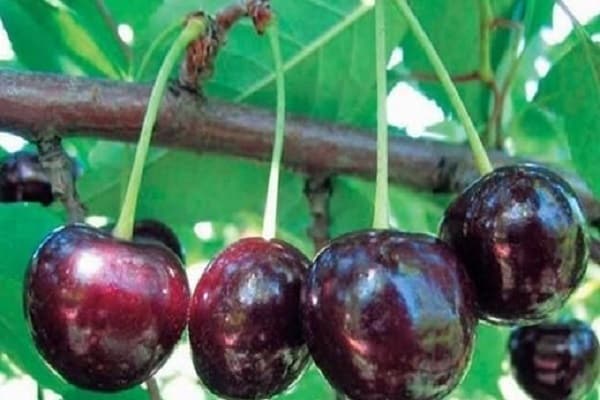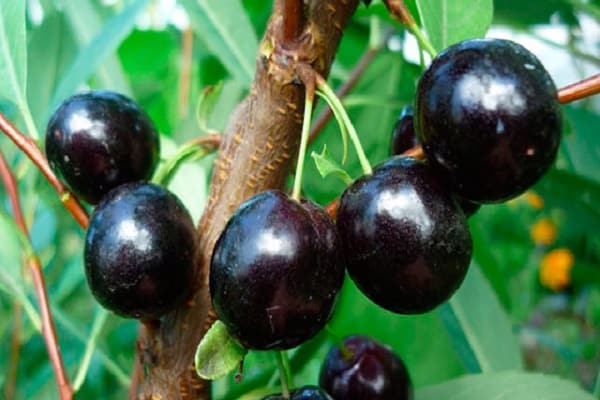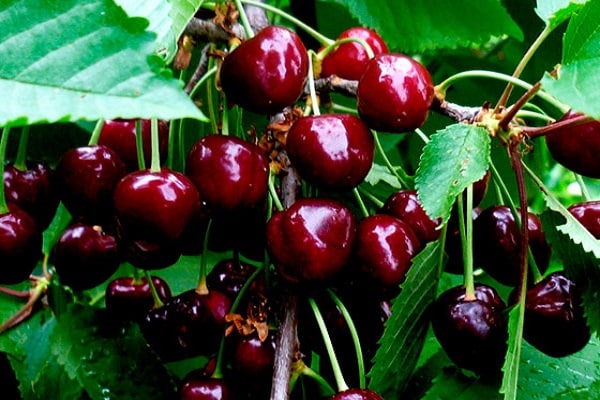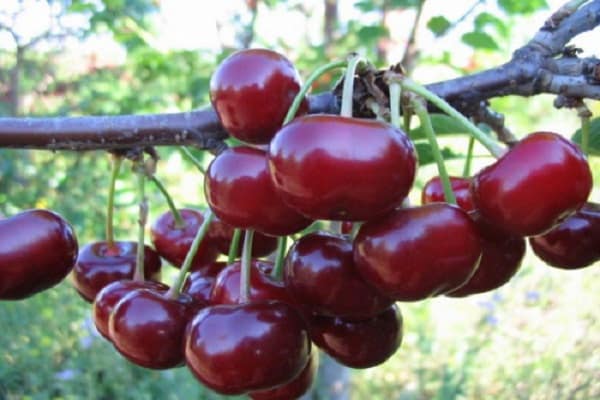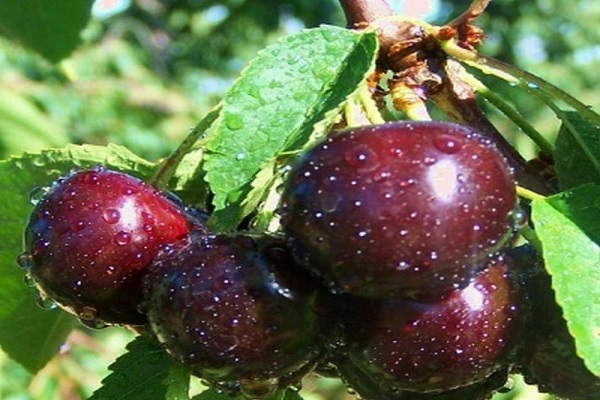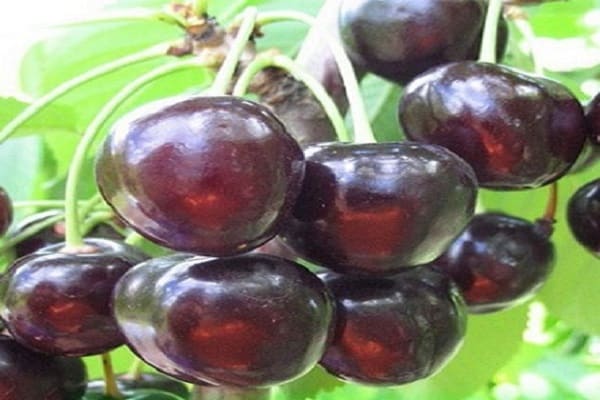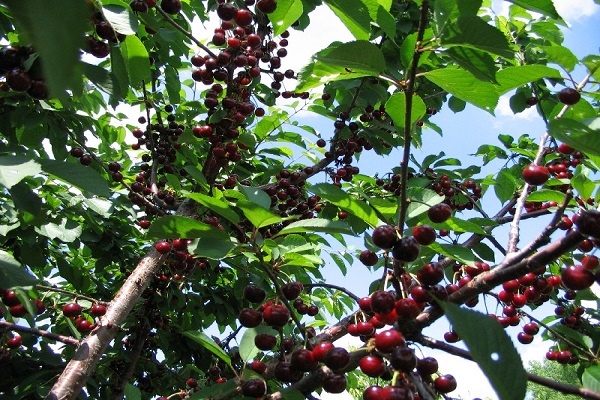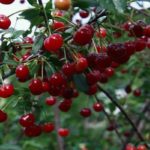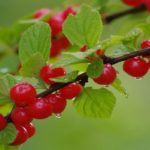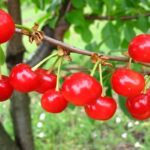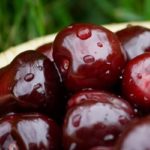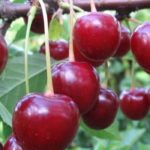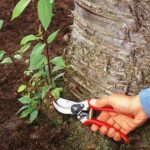It is difficult to imagine a garden in which only vegetables grow without berries and fruits. The most common are apple, pear, plum, currant, apricot, cherry and sweet cherry. However, for the successful cultivation of different species, different conditions are required, so you need to approach the choice of tree responsibly. It is worth studying the characteristics of the Nochka cherry.
Breeding history
Cherry Nochka compares favorably with other species because it is a hybrid obtained by crossing cherries and sweet cherries.Breeders wanted to get a berry with high frost resistance, like cherries, and juicy large berries, like cherries. As a result, L.I. Taranenko coped with the task and obtained the Nochka variety by crossing Valery Chkalov cherries and Nord Star cherries.
Description and characteristics of the variety
To understand whether this duke is suitable for a particular garden, you need to study the description of the Nochka variety. The leaves are large, dark green in color with a glossy surface. The berries are heart-shaped, the flesh is dense, juicy, with a pronounced sweet and sour taste. The skin is dark and shiny.
Duke begins to bloom in mid-May, but in some cities later due to weather conditions. Berries appear 1.5-2 months after flowering. The cherry hybrid Nochka has the best qualities of its “parents”: a bright cherry aroma and rich cherry taste.
Characteristics of Nochka cherry
The Nochka tree is considered medium-sized, the height of an adult specimen is 3 meters. The crown is wide and spreading. This point must be taken into account when planting trees, so that in the end the cherries are not crowded. The berries themselves are large, more like cherries: on average 7-10 grams each.
Nochka's yield is small. One tree produces no more than 10 kilograms of berries, so you will have to plant more than one specimen to sell.
But cherries have good winter hardiness. Duke easily withstands frosts down to minus 30 degrees, so it is ideal for growing in regions with cold, harsh winters. But young seedlings can freeze, so you need to plant Duke Nochka in the spring, not in the fall. It would be a good idea to scatter snow mixed with sawdust around the tree.
Nochka cherry variety has good immunity to many diseases, but some preventive measures are still needed. Resistance to pests is also at a high level, which simplifies tree care.
Advantages and disadvantages
Since the variety was artificially bred to obtain the best qualities from two trees, Nochka cherry has a large number of advantages:
- Excellent frost resistance. It is believed that Nochka’s is higher than that of other Dukes.
- Immunity to various diseases, including coccomycosis.
- The tree can easily withstand hot, dry summers and does not require frequent watering.
- Berries. They have decent taste, are large and beautiful in appearance.
- Nochka cherry variety is unpretentious and therefore does not require special care.
But, as always, there are some drawbacks:
- The tree is self-sterile, so pollinating cherries need to be planted nearby. Nord Star, Molodezhnaya, Meteor, Lyubskaya are suitable for these purposes.
- Low yield, which is extremely small if you plan to sell the berries.
- Duke sizes. Firstly, it complicates the process of caring for and harvesting. Secondly, a large area is required to plant several trees.
Features of ripening and fruiting
Fruiting of the Nochka cherry variety begins early, already in the 3rd year. The tree reaches its peak yield at 12 years of age. In order for the harvest to be regular, for planting you need to choose a sunny place without drafts with deep groundwater. The tree does not like excess moisture, so it is not worth watering often. This especially applies to mature cherries.
It is extremely important to stop watering a couple of weeks before harvest. The berries begin to ripen towards the end of June, and in some regions by the end of July.
From the very beginning, even before the time of fruiting, it is necessary to prune the tree. Shorten the shoots by a third, and remove dry or diseased shoots altogether. As already mentioned, in order for the Nochka cherry variety to bear fruit, pollinating trees need to be planted nearby. The distance between them should not exceed 40 meters.
Where is the best place to grow?
Considering the characteristics of this variety of cherries, it is not difficult to guess that it can be grown in most regions of Russia. She is not afraid of Siberian frosts or drought of the southern regions. Moreover, the tree does not even need to be additionally insulated (although in areas with harsh winters it is better to do this) or watered frequently. On the contrary, you need to make sure that where the duke is planted, groundwater does not lie close to the soil surface, otherwise the tree will rot.
From all of the above it follows that Duke Nochka is an excellent option for growing both for yourself and for sale. Delicious large juicy berries will please everyone.

